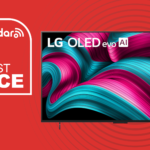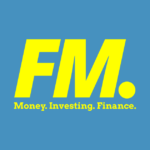You crushed your workout, but now you can barely walk down the stairs, sit on the toilet, or lift your arms above your head. Congratulations, you’re experiencing a case of what is known to be DOMS, but somewhere in your mind, you’re thinking, “It’s working.”
But what if it’s not?
Lifters have long associated post-workout soreness, also known as DOMS (Delayed Onset Muscle Soreness), with muscle growth and development. The logic seems sound: if it hurts, it works. However, the reality is much more nuanced. Feeling wrecked doesn’t guarantee gains; it may indicate that you didn’t prepare your body for the demands you placed on it.
Here, I will uncover the truth behind the “no pain, no gain” mentality. You’ll learn where this myth originated, why it continues, and what factors contribute to muscle growth.
The Real Truth Behind ‘No Pain, No Gain’
It doesn’t take much to realize that “no pain, no gain” isn’t from science, but from slogans and the gym bros. It was coined during the 1980s fitness boom, often associated with high-intensity aerobic and bodybuilding culture. Jane Fonda popularized it with her workout tapes. Arnold and the Golden Era bodybuilders wore it like a badge of honor.
On the surface, it makes sense. You see bodybuilders taking sets to failure, grimacing, yelling in each other’s ears while their muscles swell with every rep. Upon examining the end result, it is effective. If you weren’t limping or grimacing, were you even growing? Pain was sold as the price of progress.
Although there is some truth to it, like most myths presented as facts, here’s the whole truth: that mindset earns motivational points, but it’s not how hypertrophy or training works in the real world, where you need to work to earn a living. You build muscle through effort, not agony, but through progressive overload, smart programming, and recovery.
What Really Drives Muscle Growth
Muscle growth isn’t just triggered by how sore you feel; it’s driven by mechanical tension, metabolic stress, and, to a lesser extent, muscle damage. Among these three factors, mechanical tension, created through progressive overload, is the most crucial driver of hypertrophy. This tension signals muscles to adapt and grow, making it the cornerstone of effective strength training.
DOMS, on the other hand, often comes from:
- Novelty: Engaging in a new exercise or movement pattern.
- High eccentric loading: Focusing on the lowering phase.
- Lack of conditioning: Starting with too much volume or intensity too quickly.
You can feel sore and not experience any growth at all. You can also grow steadily with minimal soreness if you train with progressive training methods. As hypertrophy expert Dr. Brad Schoenfeld said:
“Other researchers, however, have questioned this hypothesis (of muscle damage), noting that hypertrophy can occur in the relative absence of muscle damage.”
Constant soreness is a sign you’re under-recovering, overreaching, or following a program not meant for you, but it’s not a sign of gains. Excessive DOMS can result in stalled progress and a higher risk of injury, because if you’re preoccupied with pain, you’re pursuing the wrong goals.
The Dangers Behind No Pain, No Gain Mentality
The ‘no pain, no gain’ mentality may have worked for old-school bodybuilders and women wearing tight leotards and high socks, but now you should realize that training for soreness is not ideal. When you push hard too often, you don’t give your body a chance to adapt and recover, and you keep your gains stuck in neutral.
Here’s what lifters risk when they chase pain over progress:
- Stalled Hypertrophy: Constant novelty and doing what you’re not ready for prevent progressive overload. Without continuous and gradual increases in load, muscles do not adapt optimally, and the gains stop. (2)
- Increased Injury Risk: Chronic soreness can increase the risk of injury, particularly in connective tissues and joints. DOMS is associated more with connective tissue damage than muscle fiber damage, and constant high levels of soreness suggest poor recovery rather than growth. (3)
- Poor Movement Quality: When you train to feel the burn or become sore, your form often takes a back seat to sensation. That’s when ego lifting creeps in, you’re throwing around weight, chasing fatigue instead of focusing on technique. Solid form under control beats flailing through sets any day. Don’t trade quality for soreness.
- Burnout: Let’s be honest: being sore all the time sucks. It makes the stairs feel like a death trap, wrecks your sleep, and turns training day into a battle against oneself. That level of fatigue might feel like you’re grinding, but in reality, you’re grinding yourself down. That’s not discipline; it’s burnout dressed up as effort.
The better path? Train hard, recover harder, and evaluate your success by strength, consistency, and how well you move, not by how much it hurts the next day. Follow the time-tested advice below.
What Lifters Should Do Instead
You need to forget chasing soreness, destroying yourself, and seeing it as a sign of progress, and start focusing on what works below.
- Progressive Overload: Gradually increase weights, reps, or training volume over time because you adapt to challenge, not chaos.
- Movement Mastery: Efficient, well-performed sets and reps create better tension than sloppy sets that leave you wrecked. It’s the adage that quality always beats quantity.
- Smart Programming: Repeat key movements for a sufficient amount of time to become proficient in them before changing your exercises and workouts. Utilizing advanced training techniques that increase time under tension, such as drop sets, or that help break a plateau, like a paused squat or bench press, is far more effective than unnecessary variety.
- Recovery: Prioritize sleep, nutrition, and rest days. Adaptation also happens when you recover, not when you’re limping around the office for three days.
Minor soreness here and there is fine, but if you’re using DOMS as your primary training metric, you’re on the wrong path. Real gains don’t come from pain; they come from consistency, progression, and recovery.
Get that right, and the results will speak for themselves.








